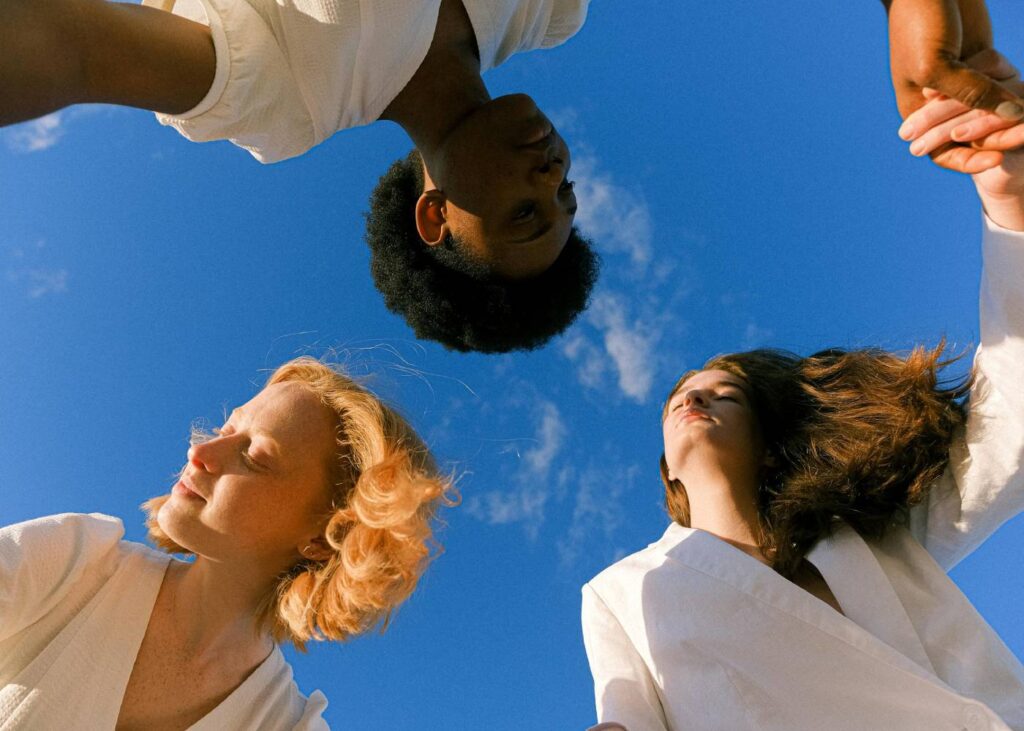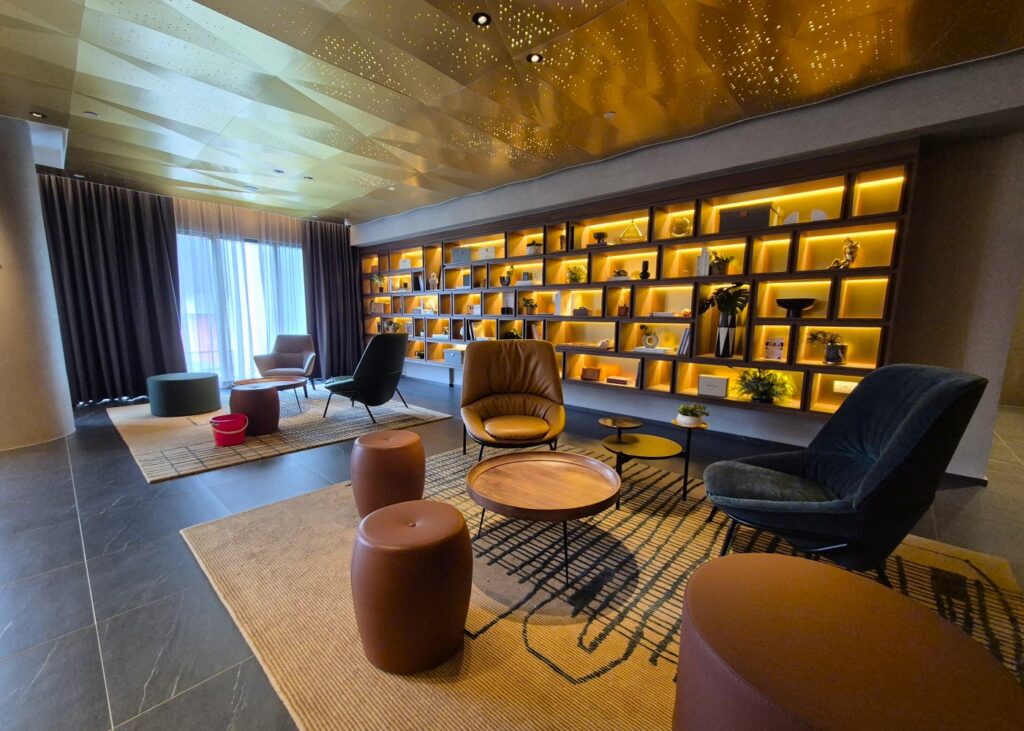Project Specifications
- Project name: Marasa Sarovar Premier, Tirupati
- Client: Marasa Hospitality Private Limited
- Location: Tirupati, India
- Area: 1.15 lakh sqft. ( 121 Keys) on 3.25 Acres
- Name of Architecture Firm: SJK Architects
-
Project Team:
Design Team: Ms. Shimul Javeri Kadri, Ms. Sarika Shetty, Ms. Michelle Pereira -
Consultants
Structural Engineers: Engineering Creations Consultancy (I) Pvt. Ltd.
MEP & FF Consultant: AECOM
Lighting Consultants: Lighting Design Works
Landscape Consultant: IPDM Services (India) Pvt. Ltd.
Kitchen & BOH Consultant: Mistry Associates
PMC: Sycone CPMC Pvt. Ltd.
Civil Contractor: Asia (Chennai) Engineering Company Pvt Ltd
Interior Contractors: K.P.Interiors (Guest Block)
Interex Arch Designs Pvt Ltd (Public Areas)
Facade Glazing & windows: Urban Arch System Pvt Ltd
Millions of people around the world travel far and wide to embark on a pilgrimage deeply rooted within their religion of faith. Most often, this pilgrimage is the first and last that a person experiences, to encounter spiritual awakening and transformation. With that in mind, one might wonder,
How can this one pilgrimage translate into a memorable experience of a lifetime?
Through the course of a person’s pilgrimage, time primarily bifurcates between prayer and recuperation, of which the period of prayer adheres to the purpose of the journey.
But what about the aspect of recuperation?
The choice of place to recuperate, like a hotel, can affect the continuity of the pilgrimage by design. It could either create a sense of continuum or break away from it. Since the destination is unfamiliar, pilgrims are likely to make uninformed choices about their accommodation.
To ensure a more holistic experience,
Wouldn’t it be ideal to experience a sense of continuum to the pilgrimage even at our choice of accommodation?
Pitched against the majestic Saptagiri Mountain range is one such hotel located in Tirupati, that resonates the sense of godliness and divinity of temple Tirumala in Tirupati. The sacred abode of Lord Vishnu is widely patronized by more than 20 million people every year and is one of India’s largest and most venerated pilgrimages within the faith.
Known as the Marasa Sarovar Premier hotel, this contemporary design manifests a unique stage that becomes a natural extension of a quintessential pilgrimage to the temple.
Let us delve into its design to see how a contemporary hotel design can reference the spiritual inclinations of the lands of the Gods.
Concept
The design of the hotel takes inspiration from the anatomy of the Tirumala temple, which is structured around the divine worship of Lord Vishnu. Its architecture reflects and reinterprets two main aspects, the pattern of circumambulation and the orthogonal form of the temple. Whilst the interior spaces dive into the symbolic and mythological importance of the temple.
Goal
To replicate an experience that is a natural extension of the temple itself but within a contemporary showcase.
The Design
As one embarks on a journey to discover the hotel, various elements of design resonate instantly with that of the Tirupati temple.
Kurma - A sacred entrance
The prologue to the experience is initiated from a public block and is designed nearest to the human anthropometric scale in elevation. This modest approach to ‘entrance design’ creates an element of curiosity, surprise and suspense of what lies beyond. An experience that is very similar to entering the temple.
Kalki - Entering the temple court
Entering the adjoining entrance courtyard, an enticing framed vista of the entire hotel suddenly comes into view. One gets to visually appreciate a spiritually inspiring composition of a large open skylit court in the foreground and a tall guest building set against a majestic mountain-range as the background. To enhance this idyllic scenery, the enormous skylit court is replaced by a large lotus pond with a lotus-inspired restaurant afloat at the centre.
It is at this court that the architectural profile of the hotel becomes prominent, showcasing clean and minimalist lines rendered with natural materials.
Narsimha - The garbha griha (the main idol shrine)
The design of the pedestrian circulation space encompassing the water court gives ample time for a passerby to visually appreciate the solitary image of the lotus restaurant, as they journey along the periphery of the pond. The lotus accommodates a stunning restaurant that is cloaked by a glazed veil on all sides and a contemporary lotus flower roof. The elevated roof not only appears to delicately levitate but also attempts to imitate the roof of a temple with the presence of a kalasa (topmost point of a temple).
The water element encompassing the restaurant instils a sense of divinity to the scene, capturing the skies along its undulating surfaces as scattered blossoms stay afloat amidst these reflections. By night as the interiors of the restaurant is brought to life in artificial light, its radiance sets the encompassing water court aglow.
Rest and recuperation
The 121 key guest block of the hotel approaches after traversing the lotus court. The building unlike the lotus restaurant manifests a subdued architectural profile, reinterpreting the terracing profile of a temple but in a contemporary silhouette. Its simplicity shuns the limelight bringing the lotus restaurant to the fore, emphasizing its importance to the layout.
Besides guest rooms and suites, the guest block also accommodates banqueting facilities including a business centre, a health centre with a spa, a gym, a games room & swimming pool and 2 speciality restaurants.
Referencing Mythology and symbolism
The spaces that unfold inside the hotel building manifests a different experience for its guests but stays in tune with the concept. Deviating away from the simplicity of the external form, the design now taps into the importance of mythology and symbolism in temple architecture. Since Marasa Sarovar Premier hotel is a reflection of the temple Tirumala-Tirupati, it takes inspiration from the mythologies woven around Lord Vishnu. Each interior space lays emphasis on one of the ten mythological narratives of Lord Vishnu in his 10 reincarnations on earth known as the Dasavatara. Each avatar is expressed through symbolism and craft; colour and emotion linked with its era, defining the aesthetics of each space uniquely.
What better way to drape these spaces than with the crafts that kindle from this temple town.
Andhra Pradesh, the homeland of Tirupati, is a state that oozes with artistry unique to the region. For example, dokra craft, bidri, kalamkari, traditional weaves etc.
These crafts have been incorporated into the interior design of the hotel in contemporary manifestations, bringing mythologies to the fore in new light. This approach instils a sense of ‘place’ to the design, reminding the guest that the pilgrimage is indeed part of the story of Andhra Pradesh.
The complete pilgrimage
The Marasa Sarovar Premier hotel is an important example proving to us that hospitality can indeed create a more rounded and holistic experience of ‘place’ and ‘purpose’. Albeit its manifestation is contemporary and in line with modern-day requirements, the hints of sensitivity it lends to nurturing the identity of the temple town are what makes it different from other hotels.
Ensuring that a ‘once in a lifetime’ experience to a spiritual transformation and enlightenment, will never be forgotten.
Discover more on hotel design

The Ultimate International Women’s Day Celebration at Mondrian Singapore Duxton

First Look! Experience Upscale Living at the New Quincy House Singapore in Holland Village

The Johri – Serving Quintessential Rajasthan in a Luxury Heritage Hotel

Entranced by jazz along the Queen’s necklace

Plan your next holiday at this beautiful resort in the hills
Copyright © 2025 DSGN arcHive

